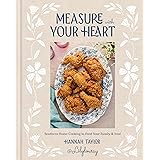Navigating the world of natural healing and plant-based nutrition can often feel overwhelming. Are you wondering how to implement the precise dietary recommendations outlined by Dr. Sebi for optimal health and detoxification? In the comprehensive video above, Timotha Lanae shares the complete Dr. Sebi recommended food list and practical meal plan ideas. This article serves as your in-depth guide, expanding on those principles to help you understand the ‘why’ behind each recommendation and effectively incorporate the alkaline food list into your daily life.
Dr. Sebi’s philosophy revolves around the concept of cellular nutrition and revitalizing the body through an alkaline, plant-based diet. He believed that disease thrives in an acidic environment and that by consuming “electric,” nutrient-dense, and non-hybrid foods, we can cleanse and regenerate our cells. This approach aims to reduce inflammation, eliminate toxins, and restore the body’s natural healing capabilities, offering a powerful alternative to many conventional dietary norms.
The Foundational Dr. Sebi Food List: Building an Alkaline Plate
The Dr. Sebi food list is meticulously curated to include foods that are naturally alkaline, rich in minerals, and free from genetic modification or hybridization. Understanding each category is crucial for crafting an effective Dr. Sebi meal plan that supports holistic healing and vibrant health. Let’s delve deeper into the specific selections and their significance.
Essential Vegetables for Cellular Regeneration
Vegetables form the backbone of any healthy diet, and Dr. Sebi’s list prioritizes those with exceptional nutritional profiles and alkaline properties. The emphasis is on natural, non-hybrid varieties that deeply nourish the body without causing inflammation. Beyond the common options, lesser-known powerhouses like Amaranth greens (Callaloo) offer a spectrum of vitamins and minerals, while Dandelion greens are renowned for their liver-supporting and detoxifying qualities.
- **Leafy Greens:** Amaranth greens (Callaloo), Wild Arugula, Dandelion greens, Kale, Lettuce (all except Iceberg), Purslane (Verdolaga), Turnip greens, Watercress.
- **Fruiting Vegetables & Others:** Avocado, Bell Peppers, Chayote (Mexican Squash), Cucumber, Garbanzo beans, Izote (cactus flower/leaf), Mushrooms (all except Shiitake), Nopales (Mexican Cactus), Okra, Olives, Onions, Squash, Tomato (cherry and plum only), Tomatillo, Zucchini.
- **Sea Vegetables:** Wakame, Dulse, Arame, Hijiki, Nori are particularly valuable. These oceanic treasures are incredibly mineral-rich, providing essential trace elements often lacking in modern diets and contributing significantly to an alkaline state.
The exclusion of common vegetables like potatoes or corn stems from the belief that many commercially available varieties are hybridized or genetically modified, which Dr. Sebi taught could introduce unnatural elements into the body and hinder cellular repair.
Alkaline Fruits: Nature’s Sweet Healers
Fruits are celebrated on the Dr. Sebi food list for their hydrating power, natural sugars, and abundance of enzymes and antioxidants. A key distinction, as mentioned in the video, is the preference for seeded fruits and the avoidance of “man-made” or hybridized options, such as cranberries. The natural genetic makeup of seeded fruits is considered superior for cellular absorption and detoxification.
- **Berries:** All varieties except cranberries. Elderberries, in particular, are lauded for their immune-boosting properties.
- **Melons:** Cantaloupe, seeded melons.
- **Stone Fruits:** Cherries, Dates, Figs, Peaches, Pears, Plums, Prunes.
- **Citrus & Tropical:** Limes (key limes preferred with seeds), Mango, Oranges (Seville or sour oranges preferred), Papayas, Soursops (found in Latin or West Indian markets), Tamarind, Prickly Pear (Cactus Fruit).
- **Other Sweeteners:** Apples, Bananas (smallest or Burro/mid-size preferred), Grapes (seeded), Raisins (seeded), Soft Jelly Coconuts.
The preference for smaller or specific banana varieties, like the Burro, aligns with the philosophy of consuming fruits closer to their original, unadulterated form. These natural sugars fuel the body efficiently without the inflammatory response associated with refined sugars.
Nourishing Herbal Teas for Wellness
Herbal teas offer a comforting and therapeutic way to support the body’s natural processes. Each herb on this list provides unique benefits, from calming the nervous system to aiding digestion and detoxification. Incorporating these teas can significantly enhance the healing journey, especially during colder months or periods of intense cleansing.
- Burdock: Known for blood purification.
- Chamomile: Promotes relaxation and aids sleep.
- Elderberry: Boosts immunity and fights inflammation.
- Fennel: Supports digestion and reduces bloating.
- Ginger: A powerful anti-inflammatory and digestive aid.
- Raspberry: Rich in antioxidants and supports women’s health.
- Tila: Calming herb, often used for stress relief.
Ancient Grains for Sustainable Energy
While often limited in conventional detox diets, specific ancient grains are approved on the Dr. Sebi food list due to their low glycemic index, rich nutrient content, and non-hybrid status. These grains provide sustained energy without creating an acidic environment in the body. They are versatile and can be incorporated into various meals, offering a satisfying alternative to more common, often hybridized, grains.
- Amaranth
- Fonio
- Kamut
- Quinoa
- Rye
- Spelt
- Teff
- Wild Rice
Selective Nuts and Seeds for Healthy Fats
The Dr. Sebi diet is highly selective about nuts and seeds, excluding popular choices like almonds, peanuts, and cashews due to concerns about hybridization or their acidic impact. The approved list focuses on options that provide beneficial fats and proteins without contributing to inflammation. This limited selection underscores the careful consideration given to every food item’s effect on cellular health.
- Hempseed
- Raw Sesame Seeds
- Raw Sesame “Tahini” Butter
- Walnuts
- Brazil Nuts
These nuts and seeds, along with their butters, offer a source of healthy fats and protein, essential for energy, hormone production, and cellular integrity. They are best consumed raw to preserve their enzymatic and nutritional value.
Understanding Oils: Cooking Points and Cellular Integrity
Perhaps one of the most critical and often misunderstood aspects of the Dr. Sebi food list is the specific guidance on oils, particularly regarding cooking methods. The smoke point of an oil—the temperature at which it starts to burn and break down—is paramount. When oils with low smoke points are heated past their threshold, they can become oxidized, generating harmful free radicals that contribute to inflammation and acidosis in the body. This is a common pitfall in the “Standard American Diet.”
- **Oils NOT for Cooking:** Olive Oil, Coconut Oil. As Timotha Lanae notes, olive oil has a very low smoke point and is best reserved for dressings or finishing dishes. Similarly, coconut oil, despite its popularity, is not recommended for cooking within this framework.
- **Oils APPROVED for Cooking:** Grapeseed Oil, Sesame Oil, Hempseed Oil, Avocado Oil. These oils boast higher smoke points, making them stable enough to withstand moderate cooking temperatures without oxidizing and becoming detrimental to health.
Prioritizing the correct oils for cooking is a fundamental step in preventing cellular damage and maintaining the body’s alkaline balance. Using the right oil for the right application ensures that your food remains a source of healing, not harm.
Flavouring with Dr. Sebi Approved Spices and Seasonings
Even on a restrictive diet, flavor is essential for adherence and enjoyment. Dr. Sebi’s list of spices and seasonings ensures that meals can be both healing and delicious. These natural aromatics and enhancers add depth to dishes without introducing artificial ingredients or high sodium levels common in processed seasonings.
- **Mild Flavors:** Basil, Bay leaf, Cloves, Dill, Oregano, Savory, Sweet Basil, Tarragon, Thyme.
- **Pungent and Spicy Flavors:** Achiote, Cayenne/African Bird Pepper, Onion Powder, Habanero, Sage.
- **Salty Flavors:** Pure Sea Salt (Celtic salt, Himalayan salt are excellent choices for their rich mineral content), Powdered Granulated Seaweed (Kelp/Dulse/Nori – these also provide a savory, umami flavor).
- **Sweet Flavors:** Pure Agave Syrup (from cactus), Date Sugar. These natural sweeteners are preferred over refined sugars, offering a healthier way to satisfy sweet cravings.
These spices and seasonings are not just for taste; many possess inherent medicinal properties, contributing to the overall healing potential of the diet.
Crafting Your Dr. Sebi Meal Plan: Detox Levels & Healing Strategies
Implementing the Dr. Sebi food list can be tailored to various levels of detoxification, from aggressive healing protocols to more sustainable maintenance plans. The intensity of your meal plan should align with your health goals and the urgency of your body’s need for regeneration. The video outlines a progression of detox levels, each offering distinct benefits.
Maximum Detox: The Mono-Fruit Fast
For individuals seeking rapid and profound healing, especially from severe ailments like cysts, tumors, or autoimmune conditions, a mono-fruit fast is highly recommended. As Timotha Lanae shared from her personal experience with a 10-day mono grape fast, this approach facilitates incredibly swift detoxification. By consuming only one type of fruit, the digestive system is given a profound rest, allowing the body to focus its energy on cellular repair, toxin elimination, and the reduction of inflammation. Seeded grapes, with their high water content and specific nutrients, are particularly effective for this purpose, promoting cellular hydration and flushing out accumulated mucus and waste.
Aggressive Detox: All Raw Fruit
Stepping down slightly from a mono-fruit fast, an all-raw fruit diet still offers powerful detoxification. This plan allows for a variety of approved fruits, ensuring a broader spectrum of vitamins, minerals, and live enzymes. The raw nature of the food means that its delicate nutrients are preserved, providing maximum bioavailability for cellular nourishment and regeneration. While some very sweet fruits like bananas or figs might slow the detox process slightly compared to a mono-fast, consuming only raw fruit remains a highly effective strategy for cleansing the body and combating viral loads.
Moderate Detox: Raw Fruit & Raw Vegetables
This level introduces raw vegetables alongside fruits, providing more fiber and a different array of nutrients, while still maintaining a high level of detoxification. A typical day might start with fruit for breakfast and lunch, with snacks throughout the day, culminating in a large, vibrant raw salad for dinner. The inclusion of nutrient-dense greens and other raw vegetables, perhaps paired with an Dr. Sebi-approved avocado dressing, amplifies the cleansing effect. This meal plan strikes a balance between potent detoxification and slightly greater satiety, making it a sustainable option for a moderate cleanse.
Mild Detox: Raw Fruit & Steamed Vegetables
For those looking to detoxify at a gentler pace or transitioning from a more restrictive plan, this level incorporates steamed vegetables. Steaming retains most of the vegetables’ nutrients and makes them easier to digest than raw options, which can be beneficial for sensitive digestive systems. The recommendation remains to start the day with fruit, perhaps having fruit or a salad for lunch, and then enjoying steamed vegetables for dinner. Crucially, the emphasis is still on “no salt” during this detox phase, as excess sodium can hinder the body’s natural cleansing mechanisms. This approach ensures significant detoxification without the intensity of an all-raw diet.
Maintenance & Holistic Living: Incorporating Healthy Fats & Grains
Beyond the strict detox phases, the Dr. Sebi framework allows for the gradual reintroduction of healthy fats (from approved nuts and seeds) and grains. While adding these components will slow down the rapid detoxification seen in raw food plans, it still represents a profoundly healing and anti-inflammatory lifestyle compared to the “Standard American Diet.” This phase focuses on nourishing the body with nutrient-dense, alkaline foods that provide sustained energy and support long-term health. Think of delicious spelt flatbreads topped with Sebi-approved vegetables, or creative nori wraps filled with avocado, tomato, and sprouted garbanzo bean hummus – recipes that offer both satisfaction and significant health benefits when paired with Dr. Sebi’s powerful herbal formulas.
Ultimately, the Dr. Sebi food list provides a powerful pathway to holistic healing and vibrant health. By understanding the principles behind cellular nutrition and carefully selecting naturally alkaline, non-hybrid foods, you can create a Dr. Sebi meal plan that supports your body’s inherent ability to regenerate and thrive. This is more than just a diet; it’s a commitment to using food as medicine, fostering a clearer mind, increased energy, and a resilient body.











